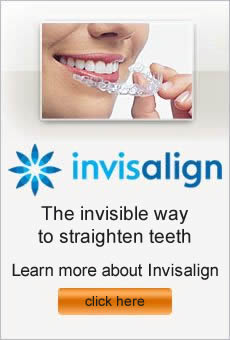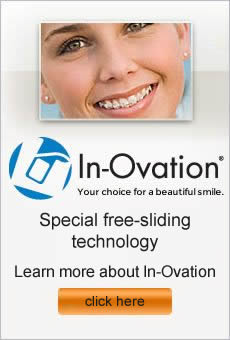Braces can provide you with a beautiful, straight smile. While you have them on, however, your oral hygiene can become more involved, and if you don’t care for your teeth properly, can lead to decay or disease. Following a few tips can allow you to enjoy a beautiful, healthy smile when your braces are eventually removed.
If you have just had your braces applied, your mouth is going to be sore. Your gums, cheeks and tongue may have sore spots as your mouth adjusts to the brackets, bands and wire. Have some dental wax on hand. Blot the problematic area with a tissue – the wax won’t stick to a wet surface – and press a ball of wax over the bracket or band, between it and your cheek or tongue. This will provide a smooth surface that will protect the surrounding soft tissues. Treat any minor swelling or pain with over-the-counter pain medications that contain anti-inflammatory properties.
Certain foods must be avoided altogether while your braces are in place. Popcorn, ice, hard candy or other hard or overly crunchy foods should not be consumed. Chewy candies or hunks of thick bread or fruit can become problematic and can tear off brackets or dislodge wires. If you have bad habits such as nail biting or pen or pencil chewing, now is the time to stop. Don’t damage your braces with these habits.
Braces can be very difficult to clean, and food debris may remain following normal brushing. It is vital that you maintain – or begin – good oral hygiene habits after the application of your braces in order to maintain optimal oral health. Brushing and flossing must be continued. A waterpik tool can be very useful in reaching hard-to-reach areas between brackets.
Be sure to follow all of the instructions provided to you by your orthodontist. Wear rubber bands or headgear as recommended. Following these guidelines can help your orthodontist give you the best smile in the least amount of time.
Dr. Fotovat is an orthodontist in the Sherman Oaks area offering braces to kids and adults.
An alternative orthodontic treatment to traditional braces is Invisalign clear aligners. This has become a popular way to straighten teeth without the negative aspects that patients link to metal braces, like the noticeable appearance, limited diet, and difficulty cleaning. If you are considering Invisalign treatment, here are some common questions and answers about this revolutionary method.
Do I have to wear the aligners all the time?
Your goal should be wearing the aligners all the time except for eating, drinking, or cleaning your teeth. Wearing them 20 to 22 hours a day will help you finish treatment faster.
Can I at least remove them for special occasions?
Unlike traditional braces, it’s possible to remove your aligners when you’d like. That means special occasions or playing rough sports might be a time that you skip your aligners. However, don’t do it very often or you’ll risk delaying your treatment.
Do I have to change my diet?
You don’t have to alter your diet at all during Invisalign treatment since you remove the aligners for eating and drinking.
Will it affect my speech?
Wearing aligners can impact your speech until you get used to them. It usually takes a short time to adjust to the plastic aligners.
Do I wear the same aligners the whole time?
Your dentist or orthodontist will develop a plan that includes changing your aligners as your treatment progresses. You will change to a new set of aligners every couple of weeks or so. On average, patients need between 20 to 30 sets of aligners during treatment.
How often do I have to go for checkups?
You will go in for checkups about every 4 to 6 weeks so that your progress may be monitored. Appointments are typically short.
How long does treatment last?
Many patients report that Invisalign treatment requires less time to complete than traditional braces. Of course, it depends on your commitment to the process and the extent of correction required.
If you live in the Burbank CA area and you’re looking for an Invisalign dentist, contact our office today.
One of the greatest benefits of Invisalign is the minimal impact it has on your everyday life. You should wear your Invisalign at all times, except when eating, brushing and flossing. Because the aligners are exceptionally comfortable, it should be easy to wear them for the recommended 20 to 22 hours per day.
Taking care of Invisalign aligners is also very simple. By following these guidelines, you will help to ensure a successful Invisalign treatment:
- The best way to clean your aligners is to use the Invisalign cleaning kit. If your kit is not accessible, another effective method is to brush and rinse the aligners with warm water. Every time you brush your teeth, you should also clean your aligners.
- Always rinse your aligners thoroughly before replacing them in your mouth.
- There are no food restrictions with Invisalign. However, the aligners must always be removed when eating.
- To avoid permanent damage to your aligners, do not place in boiling water or leave them anywhere warmer than your mouth.
- Never use denture cleaner or soak them in alcohol or bleach.
- When not being worn, store your aligners in the retainer case that was provided by your dental professional.
- Do not chew gum or smoke with aligners in your mouth.
- Do not remove your aligners at night.
- When drinking any beverage other than water, use a straw.
- If you play a contact sport that necessitates the use of a protective mouth guard, simply remove your aligners and replace with the protective appliance.
Remember, Invisalign only works when you are wearing them. If you lose your aligner or miss wearing it for several days, contact your orthodontist in Sherman Oaks right away to receive advice on how to proceed.
The American Association of Orthodontics and The American Dental Association recommend that children see an orthodontist for evaluation by their 7th birthday. Some kids are thrilled at the prospect of getting braces, and some are scared and hesitant. No matter where your child falls on the spectrum, the first visit to the orthodontist can determine their attitude towards future orthodontic visits. Here are some tips you should keep in mind when preparing your child for their first visit to the orthodontist:
- Explain the importance of taking care of their smile. Besides just having straight teeth, it is vital for kids to understand early that oral health is extremely important and plays a role in their overall health.
- Make your child aware of what to expect at their initial consultation. Knowing what happens will make the prospect of the visit less scary. If you are unsure about what the visit will entail, contact your orthodontist’s office for any questions you may have.
- Set realistic expectations for the first appointment. Some kids may be disappointed to learn they won’t be walking out of their first visit with a full set of braces. Make sure they understand the orthodontist will take good care of them and begin their braces at the perfect time.
- Maintain a positive attitude about the entire process. Be relaxed and don’t use words like “scary” or “hurt” and don’t share orthodontics horror stories. Focus on the result and the benefits of having a straight, beautiful smile.
To create a smile that lasts a lifetime, your child needs teeth that are straight and jaws that are aligned correctly. Good dental health begins early. By positively preparing your child at a young age for orthodontic care, you are setting the stage for a lifetime of good oral health and beautiful smiles.
One specialty field of dentistry is orthodontics, whose purpose is to correct teeth that are misaligned or crooked so that your smile is improved. There are a variety to methods and tools that may be employed in the orthodontic process, with the most common being braces. It depends on your specific oral issues, and sometimes teeth must be extracted as part of the treatment plan. Results are usually achieved in two years or less for the average orthodontic patient.
There are many reasons that people turn to orthodontics for help. Imperfect smiles may be a result of genetics, trauma, chronic thumb sucking, tongue thrusting, or other factors. No matter the cause, people whose teeth and mouth have failed to develop ideally are often candidates for orthodontic treatment. This is especially true since an embarrassing smile can lower self-esteem and cause patients to go through life hiding their smiles.
Some of the most common reasons that orthodontists recommend braces or other treatments include:
- Crowding – permanent teeth may grow abnormally and end up overcrowding other teeth in the mouth
- Protruding teeth – teeth that stick out past the others, often referred to as buck teeth, occur especially in the upper teeth
- Overbite or underbite – these bite issues are when either the lower teeth are excessively covered by the upper ones, or vice versa
- Open bite – often related to prolonged thumb sucking, the lower and upper teeth may not meet together properly
- Asymmetrical teeth – the upper and lower teeth are not aligned correctly, giving a crooked appearance to the smile
- Impacted teeth – adult teeth do not erupt properly and grow in the wrong position under the gums
If you or a loved one have any of these issues or others related to your smile, schedule a consultation with an orthodontist for an evaluation. Most orthodontics recommend seeing patients as early as age 7, because early intervention can sometimes help avoid more extensive or longer treatment later. The teen years are common ages for treatment, but adult orthodontics is very popular as well.
If you are considering straightening your teeth, you may be looking into various orthodontic options. One treatment for correcting a crooked or overcrowded smile is Invisalign. Invisalign uses a clear set of BPA-free plastic trays called aligners to straighten teeth without the metal and brackets associated with traditional braces. The following are some common questions you may have about Invisalign:
- Who is a good candidate for Invisalign? Patients who have healthy teeth and gums are usually good candidates for Invisalign. Adults, teens, and older children whose teeth, including their second molars, have grown in completely can be considered for treatment with Invisalign.
- What kinds of problems can Invisalign correct? Invisalign corrects the same dental problems as traditional braces, including simple to severe overcrowding, gaps, crossbite, overbite, and underbite.
- How long does Invisalign treatment take to complete? Most Invisalign cases are completed within one year. However, the exact amount of treatment time is dependent on your individual situation.
- How long do I have to wear the aligners each day? You will remove the Invisalign aligners when you eat, drink, or clean your teeth. Otherwise, the aligners should be worn for a recommended 22 hours per day to achieve the desired results.
- Are there food restrictions with Invisalign? Because you remove the aligners when you eat, there are no limitations to the types of food you can eat while undergoing treatment.
- Are retainers necessary with Invisalign? Once you have completed treatment, you will need to wear retainers while you sleep to ensure your teeth stay perfectly straight.
To determine if Invisalign is a viable option for your specific orthodontic needs, you should schedule a consultation with an Invisalign trained dental professional where you can ask additional questions specific to your case. No matter what stage of your life, Invisalign offers a comfortable, state-of-the-art approach to beautifying and improving the quality of your smile.



